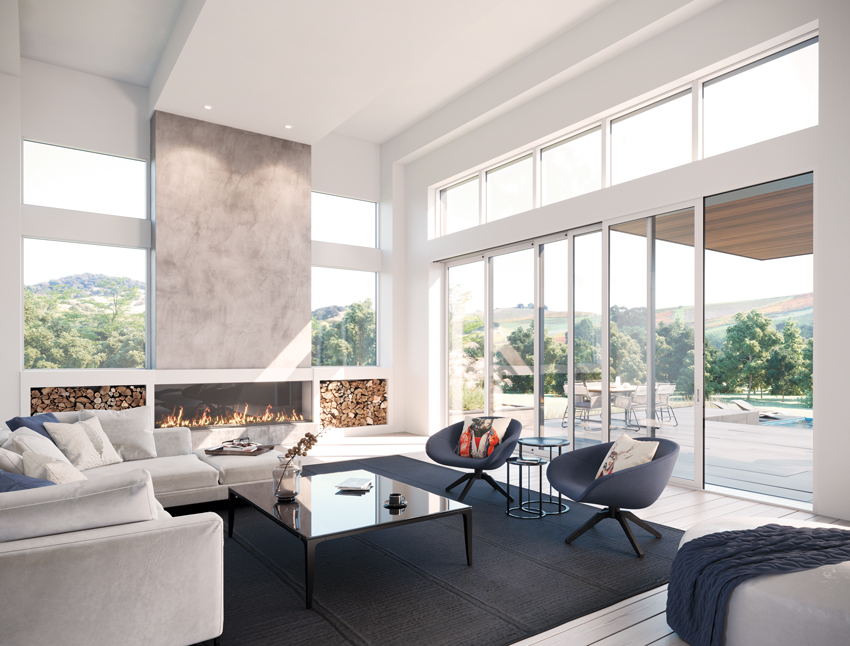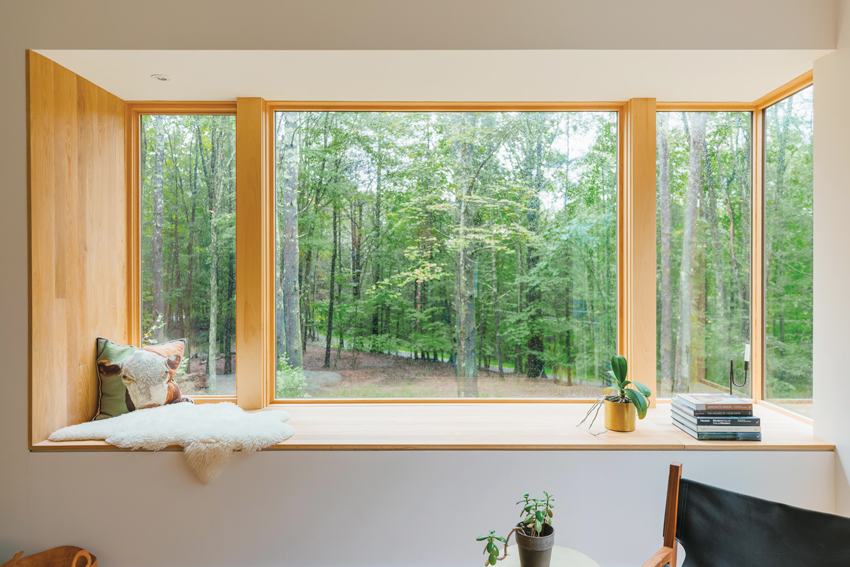How Windows and Doors Can Make a House Feel Good
Learning Objectives:
- Discuss how natural light plays an important role in humans’ sleep/wake cycles and overall health and well-being.
- Define the importance of views to the health and well-being of building occupants.
- Examine how natural ventilation sources promote health and well-being.
- Understand different window and door factors that impact comfort in a person’s living environment through thermal performance, acoustical control, and operational ease.
Credits:
This course is approved as a Structured Course
This course can be self-reported to the AANB, as per their CE Guidelines
Approved for structured learning
Approved for Core Learning
This course can be self-reported to the NLAA
Course may qualify for Learning Hours with NWTAA
Course eligible for OAA Learning Hours
This course is approved as a core course
This course can be self-reported for Learning Units to the Architectural Institute of British Columbia
The designer of a custom home asks many questions: How will the design look from the street? How contemporary or traditional will it be? Will it stand out in the neighborhood or fit in? How will it be laid out on the inside? How many rooms? How energy efficient will it be? How sustainable?
But arguably, the most important questions are:
- How will the occupants feel inside the home?
- Will the house help them thrive or just survive?

Photo courtesy of Marvin
Natural light and views promote the well-being of the home’s occupants.
In both questions, windows and doors are a significant part of the solution, and the knowledgeable designer will consider the wellness of the custom home’s occupants in all design decisions and specifications.
Humankind’s Connection to Nature
Let’s consider how we humans have lived for the vast majority of our time on the planet. Many scholars put the first homo sapiens (also known as anatomically modern humans, or AMHs) as emerging about 350,000 years ago.
But behavioral modernity, which includes the development of language, early forms of religion, and figurative art, is thought to have arisen more than 40,000 years ago. This distinguishes the beginning of the Upper Paleolithic, or Later Stone Age.1
Early humans were gatherers and hunters, nomadic, and inextricably immersed into the natural world of plants, animals, water, sunlight. There was essentially no existence separate from nature.
Even when agriculture was practiced and permanent shelters were built, much of human time from sunup to sundown was spent outside, with farmers and shepherds intimately connected to nature and its seasons.
Fast forward to today, where humans spend more than 90 percent of our time indoors, effectively shut off and alienated from nature.3
The move into indoor life is but a blip on the scale. Humans emerged 40,000 years ago, and modern humans have lived and worked mostly indoors with artificial heating and cooling and ventilation for less than 200 years.
Day-to-day life has changed drastically for us, but organisms do not evolve that quickly. It’s no wonder some say we are a “dis-eased” civilization, with rising attention disorders, obesity, depression, and other maladies. Some research suggests that our separation from nature could be partially to blame.
The Concept of Biophilia
The term biophilia comes from the Greek roots meaning love of nature. It was coined by the social psychologist Erich Fromm. In the 1980s, an American biologist named Edward O. Wilson brought the term biophilia into widespread use with his writings about human need to be in contact with nature. He described biophilia as “the innately emotional affiliation of human beings to other living organisms.”3

Photo: 22 Waves Creative
A view to nature satisfies a deep need in humans to connect with other living things. This is the concept of biophilic design.
Nature provides a great source of inspiration for an architect or designer. As Wilson said, the natural world “exceeds in complexity and beauty anything else humanity is ever likely to encounter.”
We are not likely as a species to return to gathering and hunting and shepherding. Our reliance on indoor environments will continue. But the designer or architect can create indoor spaces that increase our connection to nature, provide respite and solace, and thereby contribute to occupants’ overall well-being. Windows and doors play a critical role in terms of bringing natural light, views of nature, natural ventilation, and operational comfort into a custom home.
The Importance of Natural Light for Human Well-Being
Providing natural light for occupants goes way beyond saving on the energy used by artificial lighting. Natural light contributes to the health and vitality of the home’s occupants. Strategically placed windows and doors that bring natural light into an environment can provide health and happiness benefits to generations of occupants.

Image courtesy of Marvin
For the vast majority of human history, we humans lived in and connected to nature. Only recently have we become separated.
Natural Light Contributes to Natural Sleep/Wake Cycles
Throughout history on the planet, natural light tells organisms on a visceral level when it’s time to awaken and engage in the world, and when it’s time to slow down and retire. Natural light stimulates hormones that cause the body to engage. The lack of natural light stimulates hormones that cause the body to relax and retreat.
The body’s response to daylight is one area where the power of biophilia becomes evident. Light exposure plays an important role in a healthy sleep/wake cycle, and daylight affects our inherent circadian rhythms: physical, mental, and behavioral changes that follow a daily cycle. These rhythms are primarily regulated by light and darkness in one’s environment, as well as the tone of light, such as bluish light in the morning and warmer light in the evening, and are recognized by a third type of receptor in our eyes.4 The sun as a light source connects to our internal clocks, telling us when to wake and sleep.5
Dr. Mithu Storoni, physician, researcher, and author of Stress-Proof, states, “The brighter your daylight exposure, the more melatonin you produce at night.”6 Melatonin is a type of hormone that is produced by the pineal gland in the brain during darkness at night. It is sometimes called the sleep hormone. So the amount of daylight exposure we get is critical for maintaining a normal rhythm of sleep and wakefulness.

Photo courtesy of Marvin
The presence and tone of natural light tells the body to wake up and get going.
How Natural Light Affects Mood
Many people rely on many hours a day of natural light to feel their best. When natural light is not available, the mood suffers. When days of winter have fewer hours of daylight, some people sink into such a deep lowered mood that it is clinically named seasonal affective disorder, or SAD. Providing abundant windows in a home to capture maximum natural light helps the occupants feel and function better.
When a home’s design embraces and enhances the benefits of natural sunlight through deliberate choices that strengthen our connection to the outdoors, those much-desired feelings of well-being are a natural result.


















